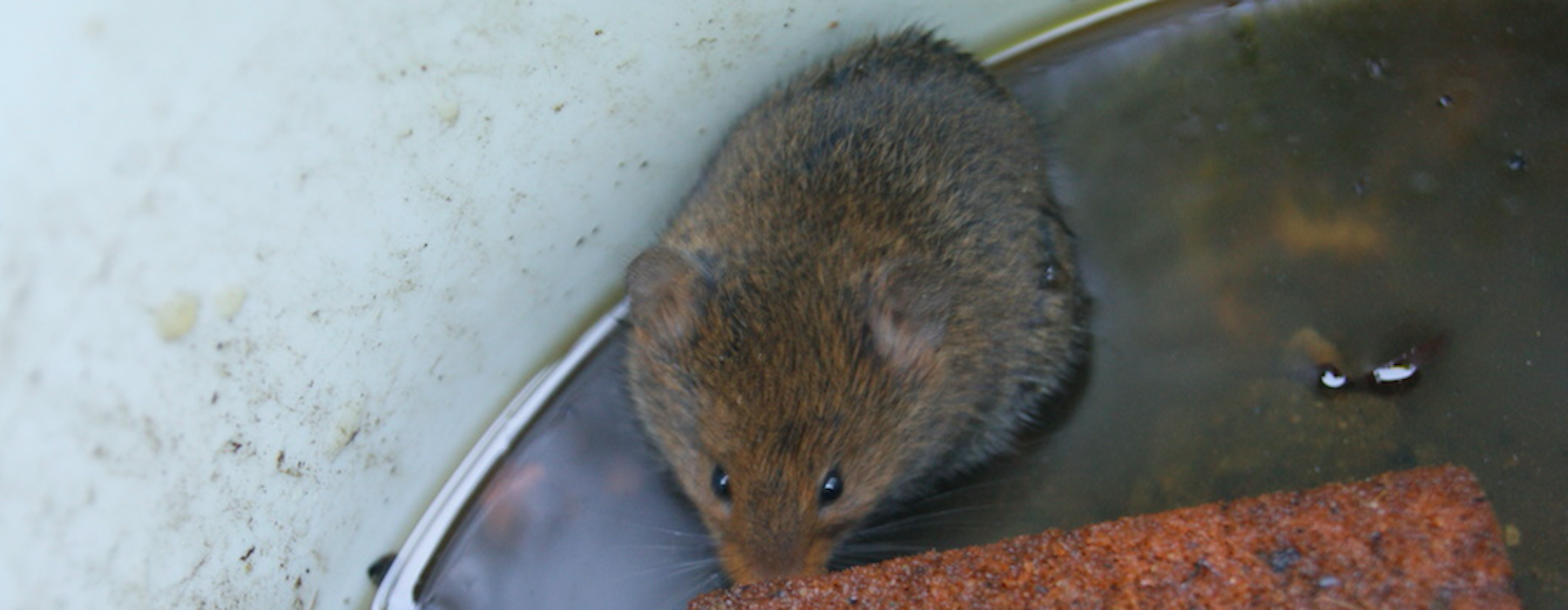Taxonomy
Order Rodentia
Family Cricetidae
Basic Description:
The rock vole is one of the more rare species of vole. The rock vole is characterized by an orange colored head and yellow or saffron fur around their nose. The back of this vole is heathered brown and black and the underside is silvery white or gray. It has prominent, medium sized ears and a long tail with sparse hair. This is a medium sized vole, and males are slightly larger than the females.
Length: 140-185 mm total, tail length: 42-62 mm
Mass: 30 to 48 grams
Habitat
Rock voles require a unique habitat. While previously thought to be found only in the cool, coniferous Canadian Boreal Forest, they have been found in slightly warmer and more deciduous forests in the Northeast of the United States. They are found at mid to high elevation hardwood forests or krummholz where the air is cool and moist. They need rocky crevices and talus slopes to survive. They require a fairly open canopy yet thick underbrush, preferably with many boulders and fallen trees. They are usually found close to small mountain streams, and the presence of the plant Bunchberry Dogwood (Cornus canadensis) can predict the presence of rock voles.
Vermont Range
Due to the habitat preferences of the rock vole, they are only likely to be found in the northern Green Mountains (Lamoille/Washington counties), the Northeastern Highlands (Northeast Kingdom). They could potentially be found in the Northeastern Piedmont (Orange county) and other rocky mid to high elevations forests, though more research is needed on this species.
Diet
Type: Predominantly herbivore
The rock vole’s diet heavily relies on the bunchberry dogwood plant (Cornus canadensis). In Vermont, bunchberries are not often found in hardwood forests, and are more common in more boreal and krummholz regions. They also eat other plants, mosses and ferns.
Reproduction
Rock voles start breedings in the early spring and continue to breed through the late fall. Females will have at least 2 litters a year, and they are able to get pregnant just 24 hours after the birth of a litter. The gestation period lasts 19-21 days and each litter is about 3-4 young. Rock voles reach sexual maturity at 1-2 months and the life span is about 1 year.
Conservation Status
- Vermont: S2 (Imperiled)
- Global: G5 (Secure)
- IUCN Red List: Least Concern
More Information
Vermont Distribution
Banner Image:
Photo 13078816, (c) David LeGros, some rights reserved (CC BY-NC) / Cropped from original
References
Gucker, Corey L. 2012. Cornus canadensis. In: Fire Effects Information System, [Online]. U.S. Department of Agriculture, Forest Service, Rocky Mountain Research Station, Fire Sciences Laboratory (Producer). https://www.fs.fed.us/database/feis/plants/forb/corcan/all.html







